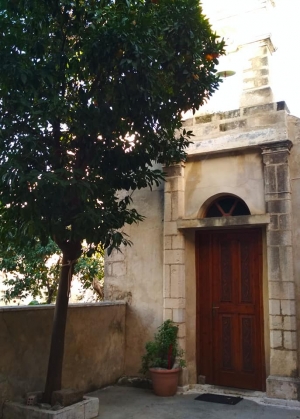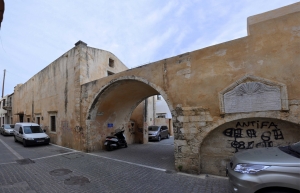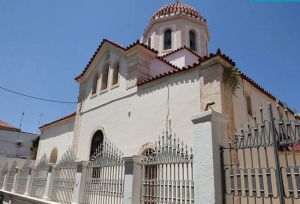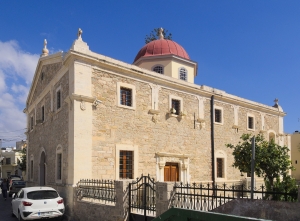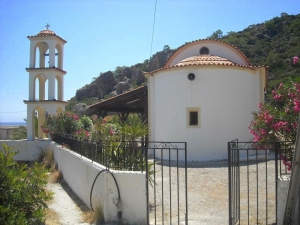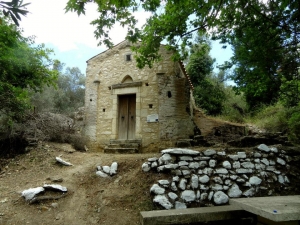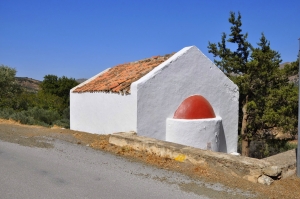The church of Saint George of Grotta is a small one-storey church that stands in a narrow street in the old town of Rethymnon and dates back to the 16th century. The identification of the present church with the homonymous temple of the Venetian archives is not certain, as there were three churches dedicated to Saint George in the city.
At the corner of streets Koroneou and Smyrnis in Rethymnon was the church of Hagia Sophia, probably a 16th-century building. It was a two-storey church with a united interior space covered by two sturdy domes, used today by the Ministry of Culture.
The church of Saint Barbara is located near the tempe Megali Panagia in Rethymnon and celebrates on December 4th. The church was founded in 1885 on the site of an older temple, probably dedicated to the same saint, which appears on maps of 1613.
The church of Saint George in Ierapetra is the most important in the city and Saint George is the patron saint of Ierapetra. The church is three-aisled with a dome on a high drum and follows the architectural standards of the Turkish occupation.
The present-day settlement of Sougia is built on the site of ancient Syia, which flourished mainly in the late Roman times. Underneath the surviving cemeterial temple of Saint Panteleimon there are the remains of a three-aisled basilica with a 20.80m x 12.40m narthex, which has been excavated by A. Orlandos.
The church of Saint Kyriaki (Agia Kiriaki) is located on the banks of the river Mouselas, fed by the rich springs of Argyroupolis. It is the result of the conversion of a late Roman bath to a church in the 9th century.
At the site of the ancient seaside town of Lissos, west of Sougia, there are the remains of two 6th-century triple-aisle wooden-roof basilicas with a slightly protruding transverse aisle, which were discovered in 1955 by archaeologist N. Padouvas.
The church of Agios Georgios is located in the plane of Ano Viannos, on the road that leads to the Monastery of Agia Moni. It is a small vaulted and single-aisled church with its interior bearing frescoes of Ioannis Mousouros, dating back to the beginning of the 15th century (there is the date 1401). The temple was built at the expense of Georgios Damoro.











